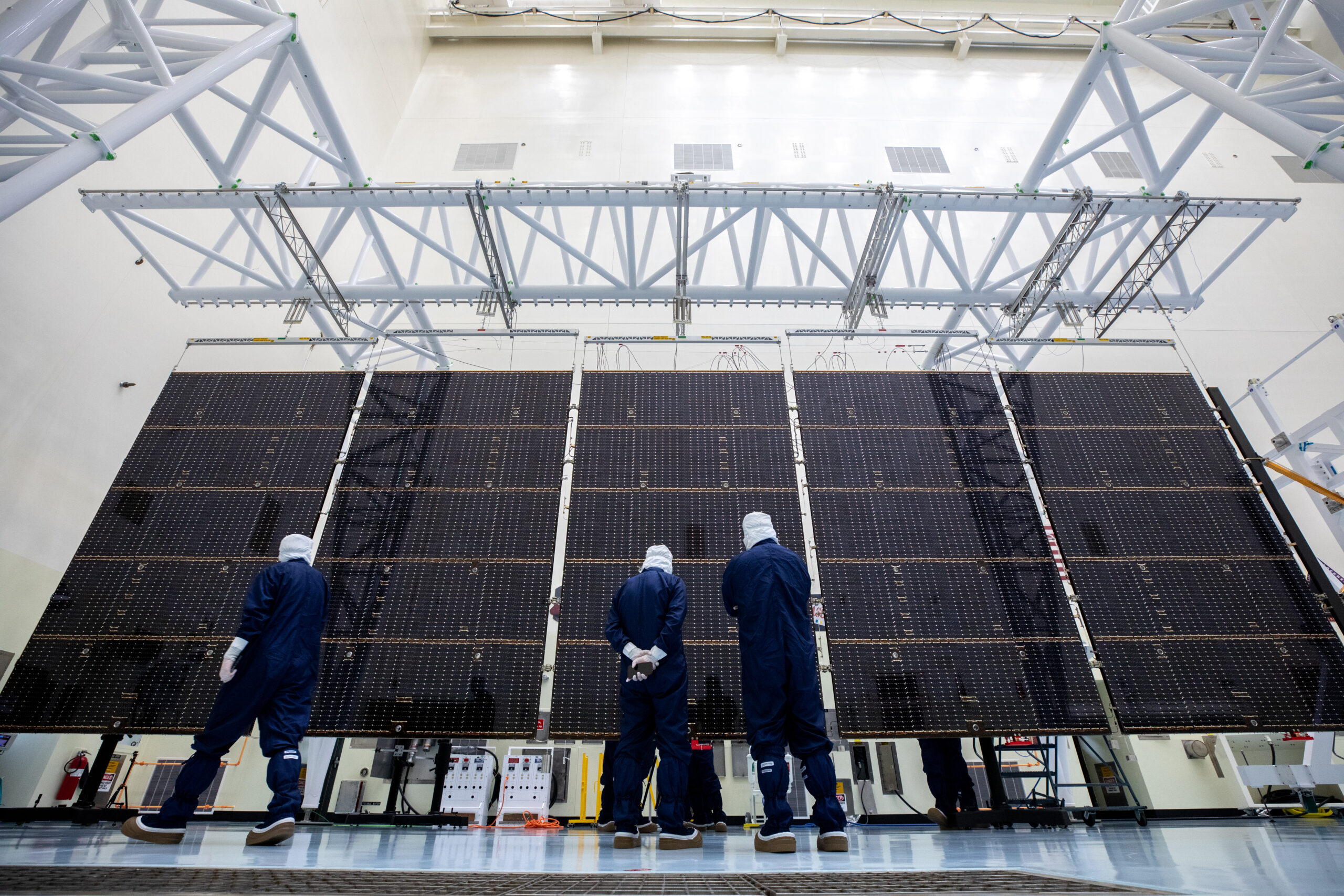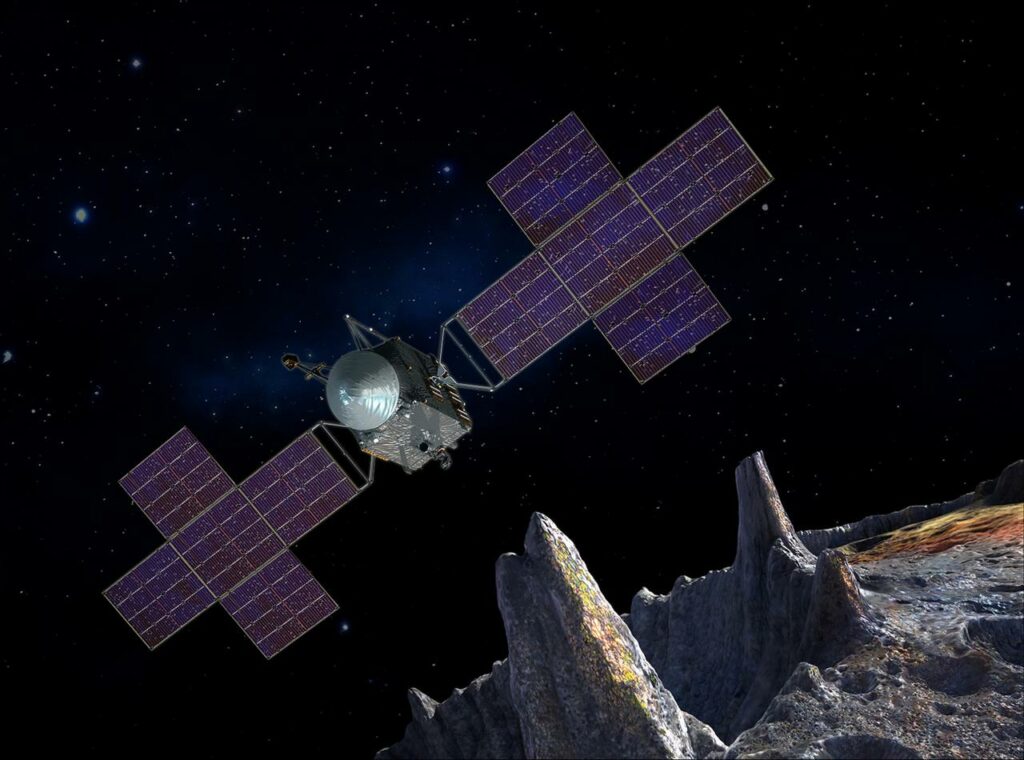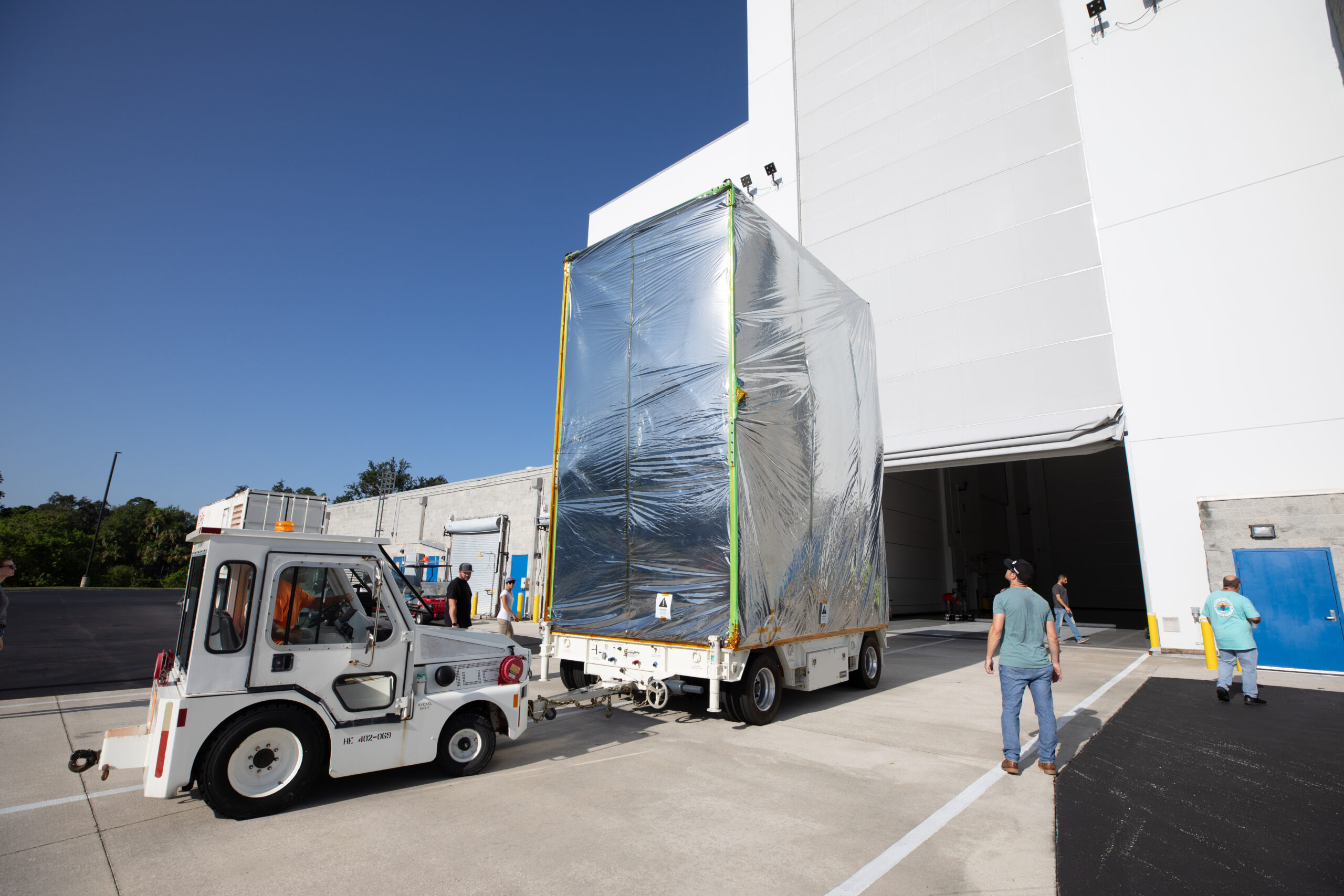NASA’s Kennedy Space Center in Florida remains closed as Hurricane Milton moves off the coast.
The safety of everyone impacted by the storm remains our top priority as the agency begins the assessment and recovery process from the hurricane.
Once the winds subsided to a safe level, the center’s Ride Out Team and engineering teams began initial checkouts to ensure bridges are safe and useable. Later, a larger assessment team will thoroughly check the entire center.
The agency’s Europa Clipper launch team will schedule an official launch date when teams from NASA and SpaceX are able to perform their assessments, and confirm its safe to launch. Teams are working to protect launch opportunities no earlier than Sunday, Oct. 13. Clipper has launch opportunities through Wednesday, Nov. 6.
NASA will provide more information on Clipper launch opportunities as it becomes available.
Tag: Falcon Heavy
NASA’s Europa Clipper Mission Advances with Solar Array Deployment

Processing of the large solar arrays built for NASA’s Europa Clipper is now underway inside the Payload Hazardous Servicing Facility at the agency’s Kennedy Space Center in Florida.
Planned to arrive at Jupiter in April 2030, the spacecraft will study Jupiter’s moon Europa, which shows strong evidence beneath its icy crust of a global ocean over twice the volume of all Earth’s oceans. Europa is currently considered one of the most promising habitable environments in our solar system.

Once processing of the first five-panel solar array is complete, technicians will remove it from the gravity offload fixture, which helps support the weight of the array. The same steps will then be repeated with the second solar array. Built by Airbus in Leiden, Netherlands, the arrays arrived at Kennedy late last month by truck, after travelling to the U.S. by air.
When both solar arrays are installed and deployed on Europa Clipper – the agency’s largest spacecraft ever developed for a planetary mission – the spacecraft will span a total length of more than 100 feet and weigh 7,145 pounds without the inclusion of propellants. The spacecraft needs the large solar arrays to collect enough light to power it as it operates in the Jupiter system, which is more than five times as far from the Sun as Earth.
Europa Clipper is being assembled at NASA’s Jet Propulsion Laboratory in Southern California and is managed in partnership with Johns Hopkins University Applied Physics Laboratory in Laurel, Maryland. The spacecraft will ship to Florida later this year for launch aboard a SpaceX Falcon Heavy rocket from Kennedy’s Launch Complex 39A. NASA’s Launch Services Program, based at Kennedy, is managing the launch service.
Join the conversation and get Europa Clipper mission updates from these accounts:
X: @EuropaClipper, @NASA, @NASAJPL, @NASA_LSP, @NASASolarSystem, @NASAKennedy
Facebook: NASA’s Europa Clipper Mission, NASA, NASA Jet Propulsion Laboratory, NASA’s Launch Services Program, NASA Solar System Exploration, NASA’s Kennedy Space Center
Instagram: @NASA, @NASAJPL, @NASASolarSystem, @NASAKennedy
NASA’s Psyche Mission Targeting Oct. 12 for Launch

NASA and SpaceX are now targeting Oct. 12 at 10:16 a.m. EDT for a Falcon Heavy launch of the Psyche mission from Launch Complex 39A at Kennedy Space Center. The change allows the NASA team to complete verifications of the parameters used to control the Psyche spacecraft’s nitrogen cold gas thrusters. These thrusters are used to point the vehicle in support of science, power, thermal and other demands, such as spacecraft orientation and momentum management. The parameters were recently adjusted in response to updated, warmer temperature predictions for these thrusters. Operating the thrusters within temperature limits is essential to ensure the long-term health of the units.
The verification activities involve rerunning simulations and fine-tuning adjustments as required to the flight parameters and procedures.
NASA, SpaceX, and Psyche mission managers met today, Sept. 28, to conduct a Flight Readiness Review (FRR) at Kennedy Space Center in Florida. During the FRR, teams provided an update on the mission status, and certified the readiness to initiate final launch preparation activities including a static fire test on Sept. 29.
Psyche has launch opportunities every day between Oct. 12 and Oct. 25.
Psyche Spacecraft Headed for Xenon Fueling

NASA’s Psyche spacecraft took another step closer on its upcoming journey to a metal-rich asteroid of the same name. On Aug. 14, a team of technicians and engineers moved the spacecraft from Building 1 to Building 9 at Astrotech Space Operations facility near the agency’s Kennedy Space Center in Florida. Inside Building 9, technicians will load about one metric ton of xenon gas into seven 22-gallon tanks inside the spacecraft.
Psyche’s solar electric propulsion will use large solar arrays to convert sunlight into electricity, which will power four Hall thrusters. The thrusters will use electric and magnetic fields to accelerate and expel charged xenon particles, or ions, to create thrust and propel the spacecraft to its destination after launch. The thrusters will operate one at a time and will have a blue glow from the xenon.
Psyche is targeted to launch Oct. 5 atop a SpaceX Falcon Heavy rocket from Launch Complex 39A at Kennedy. After launch, Psyche is set to arrive at the asteroid in July 2029, where it will spend 26 months gathering observations that will help scientists learn more about planetary formation.
In addition to its primary mission, Psyche has NASA’s Deep Space Optical Communications (DSOC) technology demonstration onboard the spacecraft. DSOC will be the agency’s first demonstration of optical communication beyond the Moon. DSOC will send test data to and from Earth using an invisible near-infrared laser, which has much higher bandwidth than radio wave systems currently used on spacecraft.
Solar Arrays Successfully Installed on NASA’s Psyche Spacecraft

NASA’s Psyche spacecraft has completed another milestone. Solar arrays are now ready to power the spacecraft on a 2.5-billion-mile (4-billion-kilometer) journey to a metal-rich asteroid to help us learn more about planet formation. A team of engineers and technicians received, prepared, and installed the solar arrays on the spacecraft at the Astrotech Space Operations Facility near the agency’s Kennedy Space Center in Florida.
Learn more about the solar arrays here: https://www.nasa.gov/feature/jpl/huge-solar-arrays-permanently-installed-on-nasa-s-psyche-spacecraft
